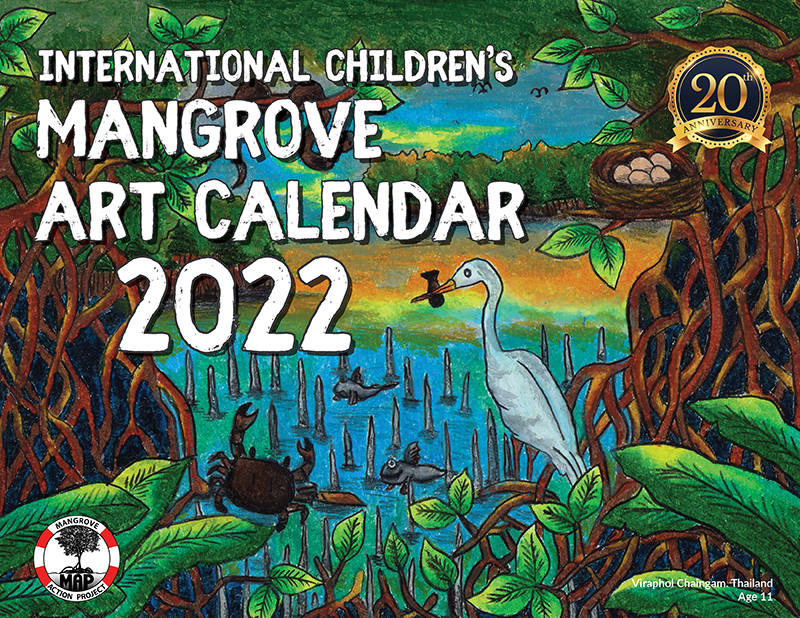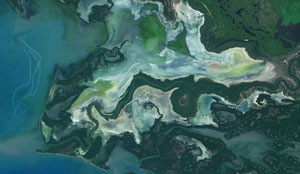MAP Website en Español haga clic aqui Mangrove Restoration Project in Kenya
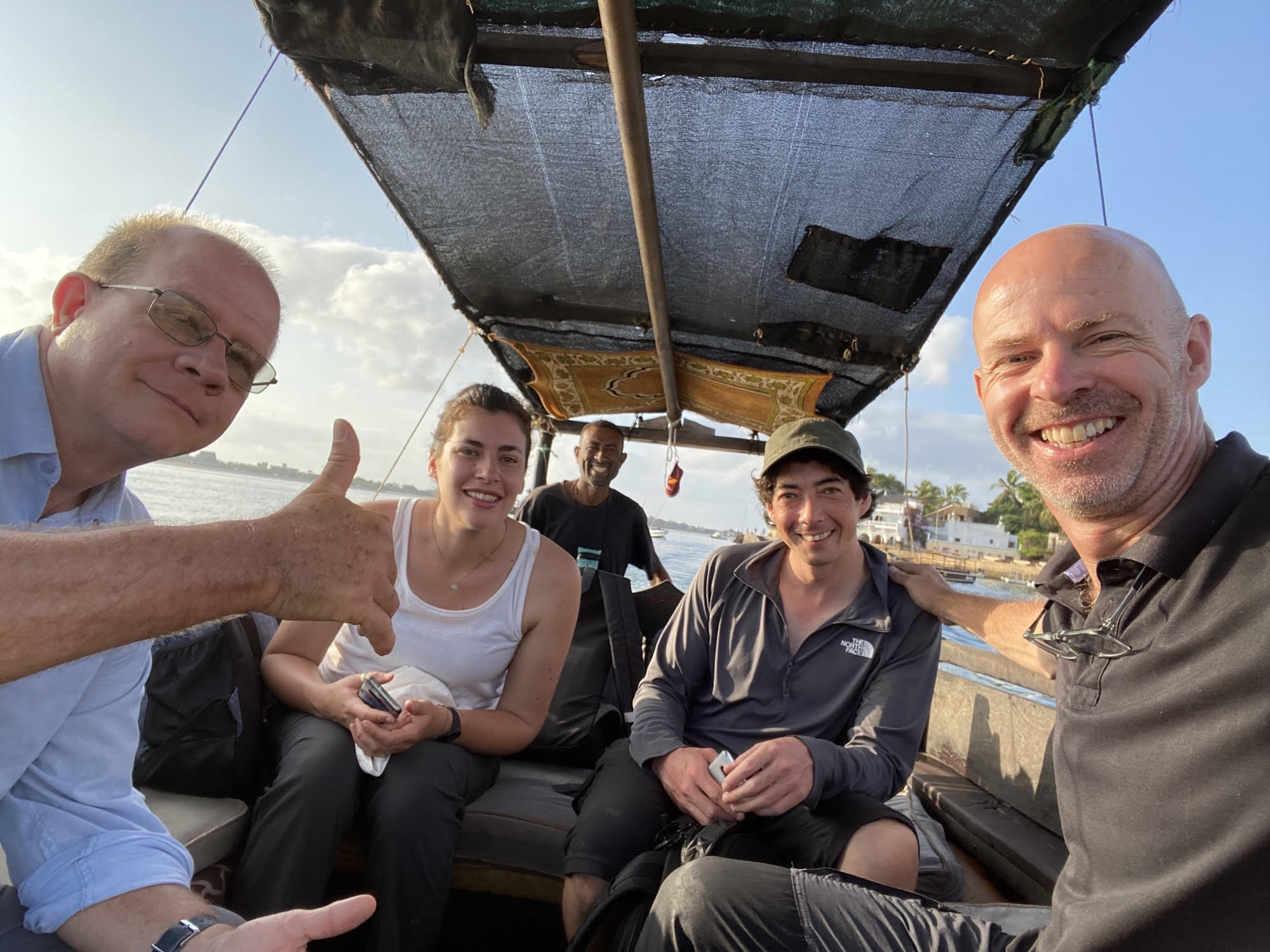
KENYA – The MAP team has arrived in Kenya! We are here with Wetlands International East Africa to teach a mangrove restoration workshop for community members in Lamu County. The workshop aims to enhance understanding of mangrove ecology and stakeholder needs to improve project outcomes for coastlines and communities. Lamu County is home to over 60% of Kenya’s mangroves which are vital ecosystems for the community. They protect against coastal erosion, provide a buffer against storm surges, and are home to many of fish species that are important to local fisheries. Mangroves are directly tied to the culture and heritage of the region with many structures, boats and other amenities being built with mangrove wood. As well as harvesting, Lamu is also losing hundreds of hectares of mangrove forest to make way for the establishment of national projects such as the Lamu Port at Kililana. Mangrove forests have gained a newfound spotlight in the global conservation movement over the past decade, mainly due to the huge amounts of carbon they can sequester. Sadly, many attempts to restore these valuable ecosystems fail, largely due to a lack of understanding of underlying ecological and social pressures. Mangrove planting initiatives around the world have met an unfortunately high rate of failure. Our ‘Community-Based Ecological Mangrove Restoration’ (CBEMR) methodology works with nature and takes into account mangrove ecology and biology to restore degraded mangroves by mimicking natural processes. CBEMR involves local stakeholders from the outset which encourages the mitigation of mangrove stressors and the facilitation of natural regeneration where at all possible. READ MORE
GLOBAL
Drones shed light on coastal water flows
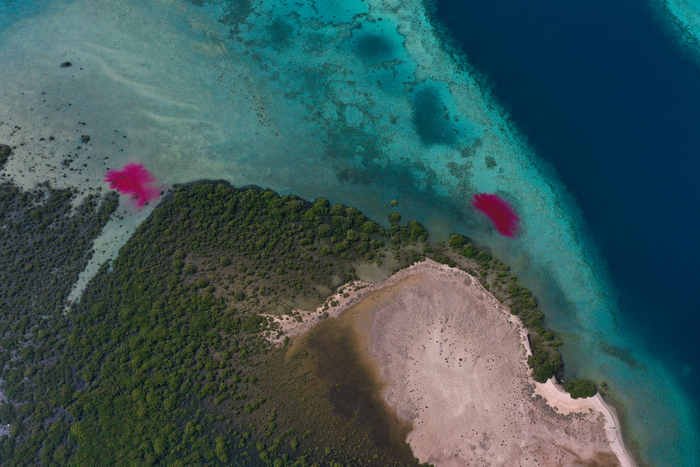
GLOBAL – Runoff in coastal waters is linked to pollution and degradation of coral reefs and other marine ecosystems. Unmanned aerial vehicles (UAVs) have now been used to overcome the challenges of monitoring water flow between ecosystems and over large areas. High-frequency hovering UAV images and flight surveys were used by KAUST researchers to track the movement of dye plumes released during an ebbing tide. Led by remote sensing researcher Kasper Johansen, the team also used information from aerial images combined with field measurements to map dye concentrations, providing insights into the dispersion of materials in the water column and along the coast. Johansen says the information obtained can provide insights into the exchange, transportation and dependencies of nutrients between mangrove, seagrass and coral reef ecosystems. READ MORE
Are ‘nature based solutions’ the best fix for climate change?
Editors note: be sure to click through to listen to the linked podcast, featuring a certian infamouis MAP person!

GLOBAL – The UN’s Intergovernmental Panel on Climate Change (IPCC) released a new report last month, and its findings have been described as “a dire warning about the consequences of inaction,” as global warming is already having dangerous and widespread impacts on planet Earth and affecting the lives of billions of people around the world. But the IPCC report also says that nature has huge potential to be part of the solution, not only for reducing the impacts of climate change but also for improving people’s lives. Nature based solutions (NBS) like restoring forests and other critical ecosystems are key, according to the report, because healthy ecosystems are more resilient to climate change while sequestering more carbon and providing other services such as food and clean water. IPCC Working Group II Co-Chair Hans-Otto Pörtner said in a statement accompanying the report that “By restoring degraded ecosystems and effectively and equitably conserving 30 to 50 per cent of Earth’s land, freshwater and ocean habitats, society can benefit from nature’s capacity to absorb and store carbon, and we can accelerate progress towards sustainable development, but adequate finance and political support are essential.” READ MORE
AMERICAS
Women’s day: Mangrove oysters mean food security for a family in Ecuador
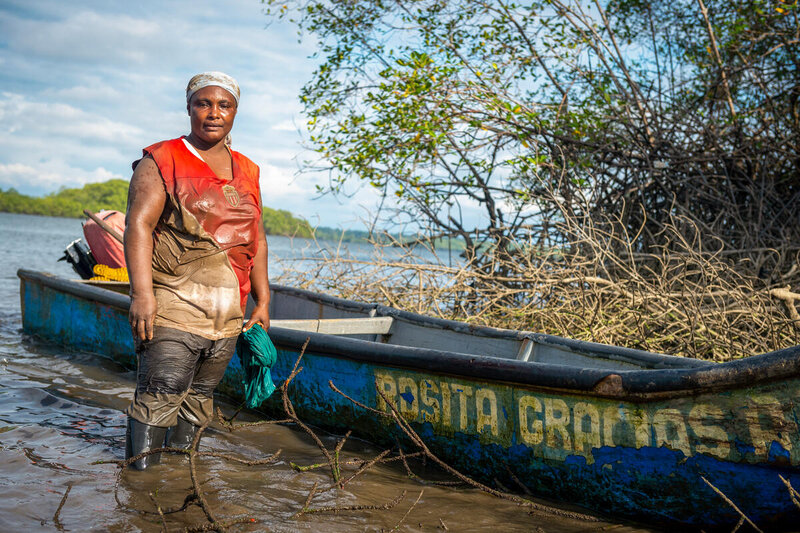
ECUADOR – “Without the mangroves there is no life for us,” says Rosa of the swamp area that serves as a protective ecosystem for the community of Punta de Miguel near Ecuador’s border with Colombia. Here, in the Mira-Mataje Mangrove Reserve, she goes out picking mangrove oysters – these provide a source of nutrition for her family, and she can also sell them on to earn an income. The area is vulnerable to both the El Niño and La Niña phenomena – literally the boy and girl, they refer to patterns of sea surface temperature in rises in the tropical eastern Pacific and decreases in the central tropical Pacific respectively. Thankfully, the thicket of roots created by the mangrove trees provides a natural barrier against the slings and arrows of extreme weather, allowing hundreds of families to continue a tradition of artisanal fishing. READ MORE
In Puerto Rico, a marathon effort builds to restore mangroves and dunes

PUERTO RICO – In 2017, Hurricane Maria, a Category 5 storm, struck Puerto Rico. The hurricane dried up four basin mangrove forests in the island’s northeast, leaving behind an urgent need for restoration, according to Robert J. Mayer, a biology professor at the University of Puerto Rico at Aguadilla. “Not having these ecosystems exposes communities and primary infrastructure to the pounding of waves generated by storms, putting the lives of hundreds of people and the integrity of their properties at risk in the face of future extreme climatic events,” said Mayer, who directs the university’s Vida Marina Center for Ecological Restoration and Coastal Conservation. In collaboration with the University of Wisconsin–Madison, Mayer and student volunteers secured $500,000 in financial support from the U.S. Fish and Wildlife Service (USFWS) for the restoration of Puerto Rico’s beleaguered northern mangrove forests, which grow along riverbanks or border salty lagoons. READ MORE
Weeds Crowding the Mangroves, Debris in the Undergrowth and the Dedication of Volunteers
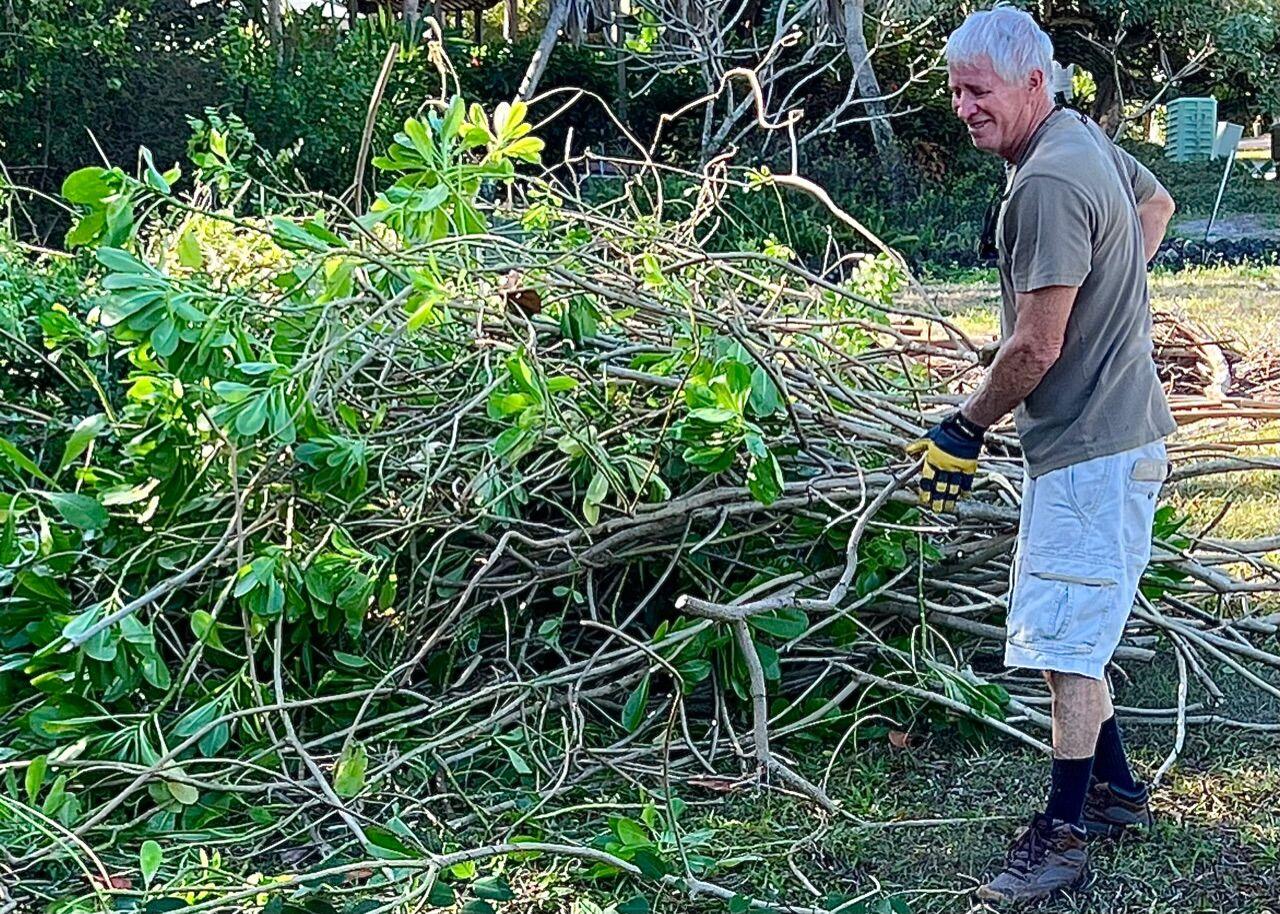
USA – Thanks to the dedication of the Collier County Parks and Recreation in coordination with Isles of Capri resident, Luke Larson, an event was held to clean up a passive park along Capri Boulevard during the weekend of March 5 and 6. The purpose of the event was to take out the invasive plants, clean out the debris, and increase the light available through the canopy of trees to reach the struggling mangroves and native trees to enable them to thrive. Some walkers passed by the endeavor and stopped to commend the group for the massive undertaking. Their appreciation and awe about the trimming of the canopy of vegetation was rewarding to the volunteers who toiled for hours with the goal of clearing out the invasives. We had participants who had been on other Isles of Capri cleanups and now, had some new like-minded participants who weren’t afraid to get their shoes dirty or bring out the gloves to participate in this positive event on Capri. Sheela was just walking by and joined right in to help the cause. The team worked for hours and placed the horticulture in constantly growing piles. READ MORE
Swathe of mangroves cleared for CGX deep water port but scope of deforestation remains undisclosed

GUYANA – A vast swathe of mangroves has been cleared from the eastern bank of the Berbice River adjacent to Crab Island to facilitate the development and construction of Guyana’s first deep water port by Canadian owned CGX Energy Inc. While the company has announced its intention to preserve some 10 acres mangroves on the 30-acre plot at it acquired for the project, there has been no disclosure of the percentage of mangroves cleared to date to facilitate the development. A visit to the location last week by this newspaper revealed that preparatory works have been progressing at the location and aerial images that were commissioned showed land filling was underway. VIEW SOURCE
Benedict Key mangrove restoration flourishing

USA – Following nine mangrove forest restoration projects on Benedict Key in the Pine Island Sound last year, hundreds of the red mangrove propagules that were planted have started to grow — almost all bearing green leaves, according to the the Sanibel-Captiva Conservation Foundation. “This is a great sign that the damaged island could soon be restored to its original mangrove cover,” Community Conservation Coordinator Kealy McNeal said following a Jan. 28 visit to the key to review progress. “This is the first sign of successful restoration.”The SCCF reported that the mangrove ecosystems of Pine Island Sound are a vital component of the estuarine and marine environment. They provide habitat and refuge to an array of wildlife, such as birds, fish, invertebrates, mammals and plants. The relationship between mangroves and their associated marine life cannot be overemphasized. Mangrove forests provide protected nursery areas for fishes, crustaceans and shellfish that are important to commercial and sport fisheries. READ MORE
ASIA
The Tiger Widows of India Conserving the Mangrove Forest Where Their Husbands Died

INDIA – Geeta Mridha, a soft-spoken woman, points at the stretch of land beyond the Gosaba River to India’s Sundarbans, the world’s largest contiguous mangrove forest. “We gathered the seeds of Sundari trees there,” she said. “Are there tigers there?” I asked. “There are tigers everywhere in the Sundarbans,” she laughed. It’s a windy February day, but at least it’s not summer. Mridha is outside with about 12 other women who have finished their housework of cooking for their family. It’s now time for them to work on the Sundari plants, the most common mangrove tree species in the Sundarbans of India and Bangladesh. It’s also a species that makes up an ecosystem that’s endangered and rapidly declining. In the Sundarbans, the tiger is king. In its shadow stands the Sundari tree, an endangered mangrove. The Frontline talks to a group of women whose husbands were killed by tigers and is now conserving these trees to protect the forest where their partners were lost. READ MORE
How One Scientist Went From Working on Wall Street to Protecting Mangroves

PHILIPPINES – When Stephanie Roe was growing up in a rural part of La Trinidad in the Philippines, she liked to spend her time on boats learning about animals. She dreamed of becoming a marine biologist who could protect wildlife. But as she went through the school system, the advice to study something “practical” that young people the world over hear from adults led her to pursue an economics degree. Over the years, Roe returned to her hometown and witnessed environmental degradation firsthand. Roe eventually traveled to Indonesia to work on forest management in Borneo, which is home to some of the greatest remaining, but endangered, rainforests. READ MORE
For change-making youth, restoration means mobilizing their communities

PHILIPPINES – The town of Salay, which sits along the northern coast of the Philippine island of Mindanao, was once home to unproductive fishponds and a barren landscape. But now, a year into Camille Rivera’s community-based mangrove restoration project, a remarkable rejuvenation has taken place, and Salay boasts a lush, saline environment that has replenished its aquatic fauna and restored meaning and purpose to its mangrove-dependent community. This is the result of Camille’s tireless work to foster knowledge-sharing between environmental specialists and local communities on wetland restoration and multispecies planting – and their collective commitment to creating change. In getting the local community to not only understand mangrove ecology but also to engage with it, Camille has indeed achieved a monumental accomplishment, and the result has brought relief and joy throughout Salay for the reestablished health of its landscape. Camille was one of six Restoration Stewards who participated in the inaugural Restoration Stewards program from the Global Landscapes Forum (GLF) and Youth in Landscapes (YIL) in 2021. Alongside Camille were her five co-Stewards, who similarly mobilized their communities across the world, from Kenya to Indonesia, working to reverse land degradation, rehabilitate ecosystems and promote alternative, sustainable livelihoods. Now, let’s meet our six incoming Restoration Stewards. READ MORE
Women reap the rewards of planting mangroves in Bangladesh
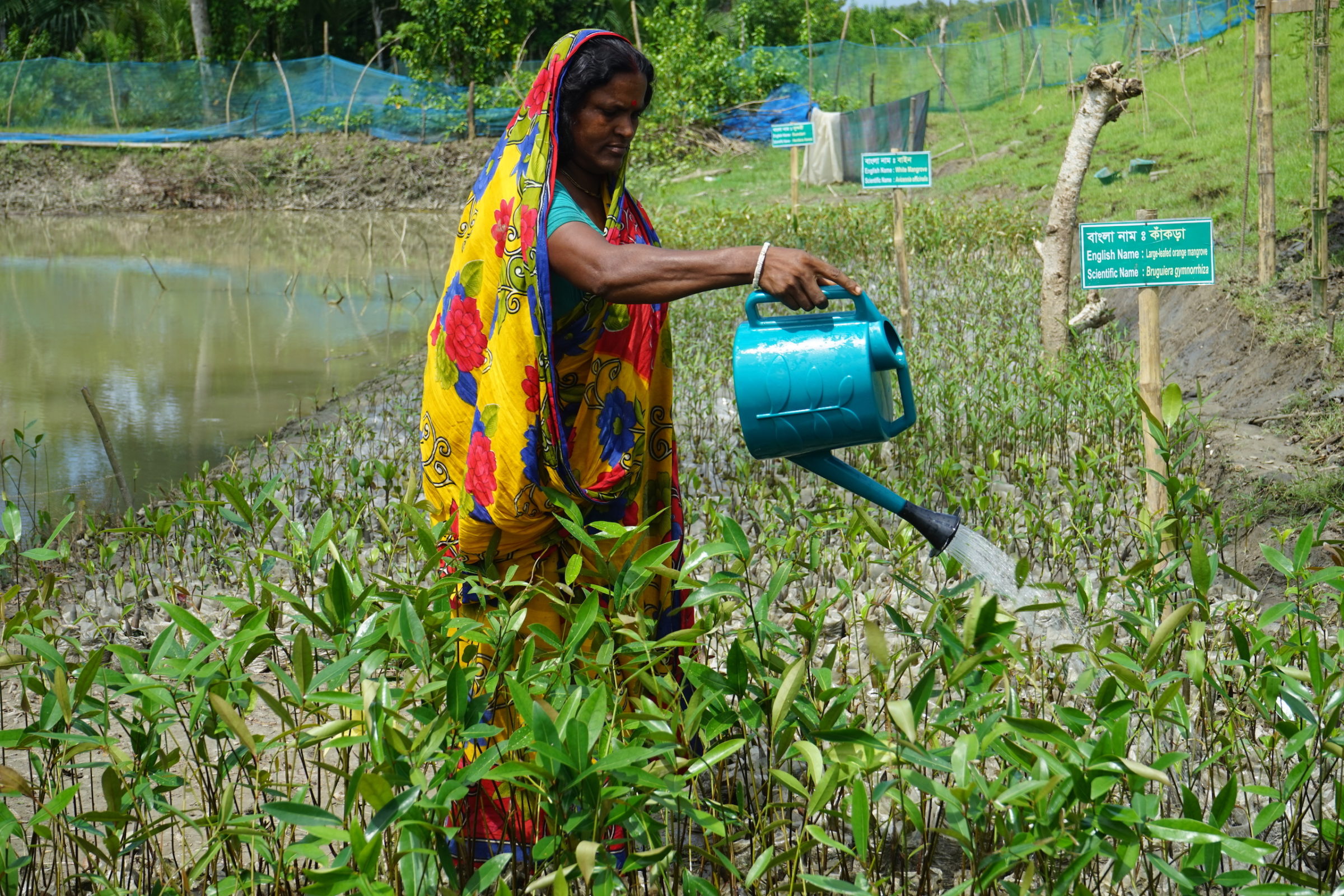
BANGLADESH – High tide in the Sundarbans brings the fruit of the keora tree, a species of mangrove, floating upriver. The fruit, which is popular across the coastal belt of Bangladesh, can be easily collected and sold. For years, 45-year-old Shilpi Rani, who lives in the small rural administrative unit of Padmapukur in Satkhira district of southwestern Bangladesh, made a living from keora fruit. Then in 2009, Cyclone Aila breached the embankment protecting her village. The sudden intrusion of saltwater caused many mangroves to die. Despite being close to the Sundarbans, the world’s largest mangrove forest, the villagers faced an acute shortage of wood for fuel. Once the floodwaters retreated, Rani and other women in the village started collecting keora fruits again. But this time they planted them, hoping to replace the mangrove trees and ensure their source of fuel and income. READ MORE
Feature Video
International Day of Forests 2022 – Forests and sustainable production and consumption
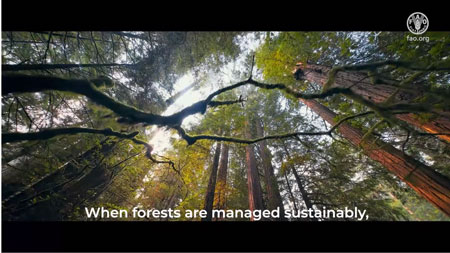
PLAY














